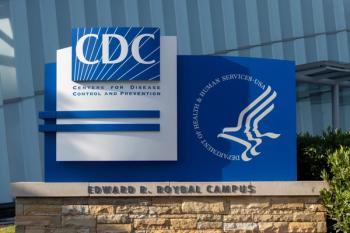
- January/February 2015
- Volume 6
- Issue 1
The New Paradigm in Specialty: Payer Formulary Control?
As costly new specialty medications come to market, the role of the payer in controlling formularies is becoming increasingly apparent.
As costly new specialty medications come to market, the role of the payer in controlling formularies is becoming increasingly apparent.
Last fall I authored an article, “
The reality is that cost does matter regarding which product the patient ultimately receives for a given therapy, and our SPT readers know that specialty drugs can cost anywhere from about $10,000 to more than $400,000 per year, based on disease type and severity.
Hepatitis C is one of the fastest growing therapeutic areas for specialty pharmaceuticals. As many of us are aware, the hepatitis C virus (HCV) attacks the liver and leads to inflammation and potentially serious damage, including cirrhosis, cancer, or failure. In most patients, the infection can remain present for years before the onset of symptoms, leaving many cases undiagnosed.
Up until the last 3 years, treatment was limited to injections of inteferon, often combined with ribavirin, for a few years, and treatment success rates were relatively low. Vertex’s Incivek and Merck’s Victrelis were launched in 2011, which increased the size of the treated patient population. In 2013, Sovaldi (sofosbuvir) was launched with a higher cure rate and a market cost of around $84,000 per course of treatment. Prescribers and patients embraced this new therapy, and in 2014, sales were estimated to be in excess of $8 billion. In October 2014, Harvoni (ledipasvir and sofosbuvir) entered the market with a cost of $94,500 per treatment. Having foreseen the risk to their budgets, payers put in place roadblocks via higher co-pays, step therapies, and prior authorizations aimed at providing access to only the sickest of patients.
Recently, another therapy, Viekira Pak, entered the market in the same price range as other recently approved therapies; however, some payers have blocked access to existing therapies in favor of the new product. Traditional pharmacy benefit manager (PBM) tactics have emerged by which the bigger rebate appears to be the driving force on product access for patients. It is worth noting that the largest PBM/payer, Express Scripts, reacted by reducing access to incumbent products in favor of the new entity.
The rhetoric certainly has been interesting as the focus has been on expanded patient access in exchange for lower competitive pricing. I guess the question is, who wins more: the payer receiving rebates or benefits from other pricing mechanisms, or the patient who might have been forced to go untreated until they became sick enough to meet the treatment protocols established by the payers? Payers have been rationalizing their decisions to include one product over another, primarily focusing on the idea that lower contract pricing increases patient access. Do payers want to risk withholding therapies only because they have not received price concessions on life-threatening disease states? Is access appropriate if the patient meets the criteria established by the payer but the formulary product selection is limited based on which manufacturer provides a larger rebate to the payer? Does the patient really win? If not, who does win? Time and Security Exchange Commission filings will tell the full story for pharma and the payers, but not for specialty pharmacy and patients.
It is clear that the success of HCV drugs has created much concern from payers about high per patient cost. It has been estimated that there are more than 3 million potential chronically infected HCV patients in the United States, and that most of those patients are yet to be diagnosed and treated. With less than 10% of patients currently being treated and with the increased focus on new drugs, the number of treated patients will grow.
What about other products in the pipeline and their potential impact on payers? The forecasted growth in specialty pharmacy among the larger PBM/payers continues to track at 19% to 20% over the next 3 years, and the focus on cost will only be exacerbated as time goes on and new approvals increase. The annual cost numbers are astounding. Where does specialty pharmacy fit in the mix?
Specialty pharmacy involves the direct-to-patient distribution of patient-specific biotech and specialty products, coupled with the provision of a variety of support services to patients taking those drugs aimed at driving better outcomes for the patients and lower costs for the payer. Reimbursement for specialty drugs can be extremely challenging, mainly due to the high cost of therapies. Typically, specialty pharmacies take on the assignment of benefits, meaning they will bear the burden of obtaining reimbursement by billing the payer. In this process, the specialty pharmacy becomes the “gatekeeper of the formulary” for the payer, as the pharmacy must verify insurance coverage prior to shipping products, eliminating potential surprises down the road.
There are many tactics that specialty pharmacies deploy, such as hotlines for patients with reimbursement-related questions and staffing call centers with product-area specialists, to ensure better customer support. These tactics are in place to help patients navigate complicated payer rules and procedures, paying attention to plan-specific limitations and requirements, such as co-pays, deductibles, coinsurance, lifetime spending caps, prior approval requirements, and preexisting conditions clauses. Specialty pharmacies will also typically collect supporting documentation to obtain prior authorization. If coverage for a medication is denied, the specialty pharmacy may file a formulary exception on behalf of the patient and, if unsuccessful, may assist the patient in finding other means to obtain access to a product. So who is the customer: the patient, the physician, the manufacturer, or the payer? Who wins, who loses?
The last few weeks have definitively shown that with the high cost of specialty products, the payer is the customer. That is where the leverage lies in product selection and, ultimately, product access. In 2014 there was a record setting number of new drug approvals by the FDA, and new therapies translate into the need to find more dollars to treat patients with therapies that previously were not in the budget. As with HCV, choices will have to be made and access to new therapies will have to be limited. Clearly, the focus is on the economics of health care, with new therapies and specialty pharmacy thrust in the center of care on behalf of the patient.
The race is on for manufacturers to be first to market. How long will “victory” be sustained before the incumbent therapy is uprooted by subsequent therapies? Does the patient end up being the loser, do they receive a therapy or not, and is the therapy they receive the one that provides the best outcome? For me the answer is clear: the payer is the customer.
In this edition of Specialty Pharmacy Times, Stacey Ness, PharmD, RPh, CSP, MSCS, AAHIVP, has provided a profile of 2014 approvals, and Mary Dorholt, PharmD, has provided a glimpse of what lies ahead in 2015. Will you be prepared? SPT
Specialty Pharmacy Times
is THE journal fully committed to setting the publication standard through peer-written and reviewed articles focused on the “real world” of specialty pharmacy practice. We invite you to enjoy this issue and pass it on! We welcome your feedback on this topic and on any topics you would like us to cover in future editions of
Specialty Pharmacy Times
. Please reach out to me at dsteiber@pharmacytimes.com. We also encourage you and your colleagues to subscribe to this unique journal, receive the e-Newsletter, and sign up for the free app by logging on to www.specialtypharma cytimes.com.
About the Author
Dan Steiber, RPh, is a principal of D2 Pharma Consulting LLC (d2rx.com) and is responsible for commercial operations, trade-supply chain strategy development including 3PL selection, regulatory oversight, and “operationalizing” organizations. He has served in several senior positions in pharmacy, distribution, and industry over the course of his 40-year career. Mr Steiber is a licensed pharmacist in Texas, Washington, California, and Pennsylvania. He is affiliated with several professional associations and publications, and is a frequent speaker on behalf of many professional organizations. He graduated from Washington State University College of Pharmacy and has participated in a variety of postgraduate programs in law and business development/marketing at Harvard University and Northwestern University. Dan currently resides in Highland Village, Texas.
Articles in this issue
almost 11 years ago
Managing Care and Costs for Orphan Conditionsalmost 11 years ago
Alternative to IVIG Reduces Antibodies in Kidney Patientsalmost 11 years ago
Viekira Pak by AbbVie Incalmost 11 years ago
Hemolytic Anemia May Develop After High-Dose IVIG Treatmentalmost 11 years ago
Passive Antibody Transfer May Occur Following IVIG Transfusionalmost 11 years ago
HIV Less Virulent Due to Widespread Access to ARTalmost 11 years ago
Attacking HIV Through Protective Capsulealmost 11 years ago
HIV Drugs May Cause Long-Term Damage to Fetal Heartsalmost 11 years ago
Specialty Drugs: Year in Review 2014Newsletter
Stay informed on drug updates, treatment guidelines, and pharmacy practice trends—subscribe to Pharmacy Times for weekly clinical insights.


















































































































































































































